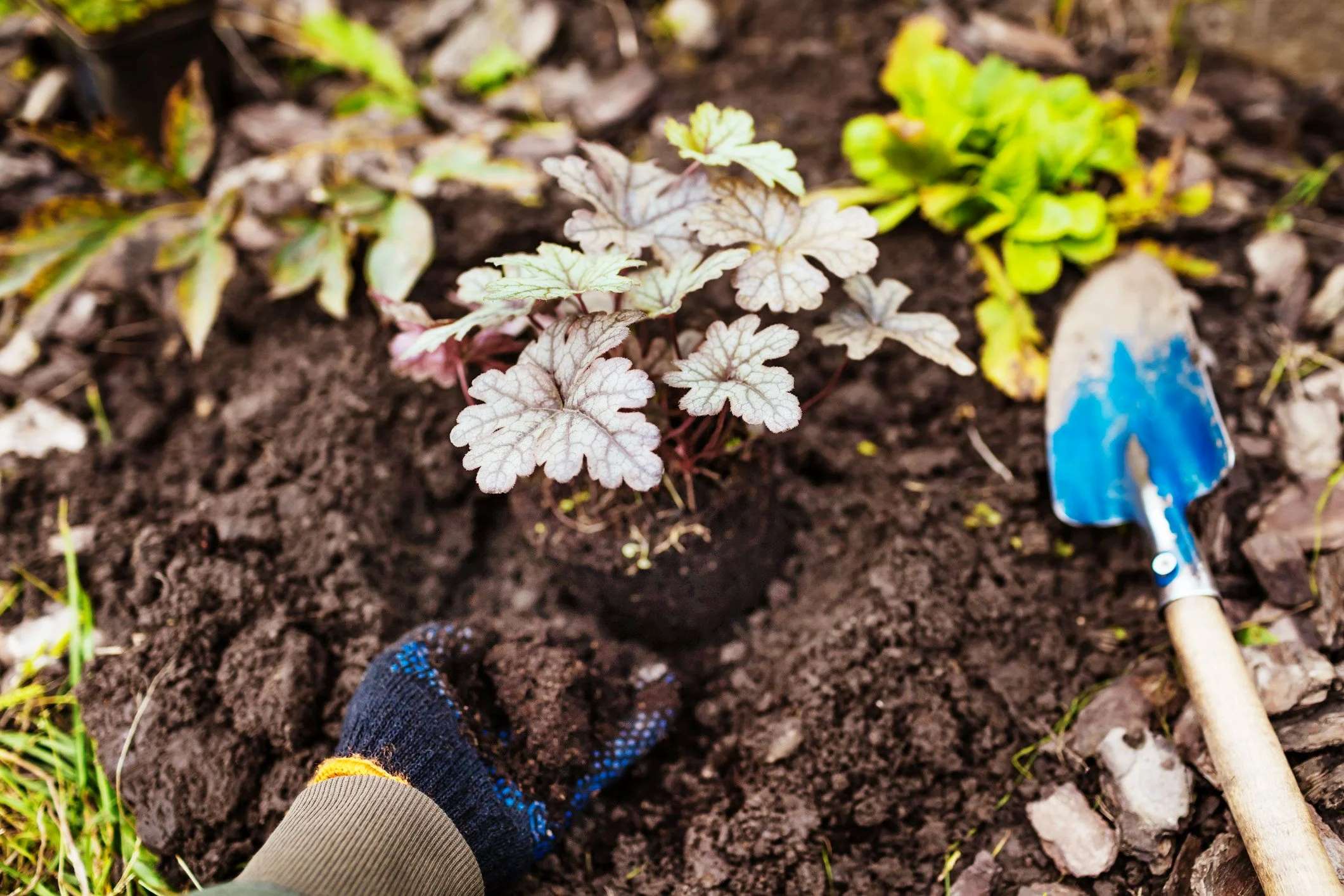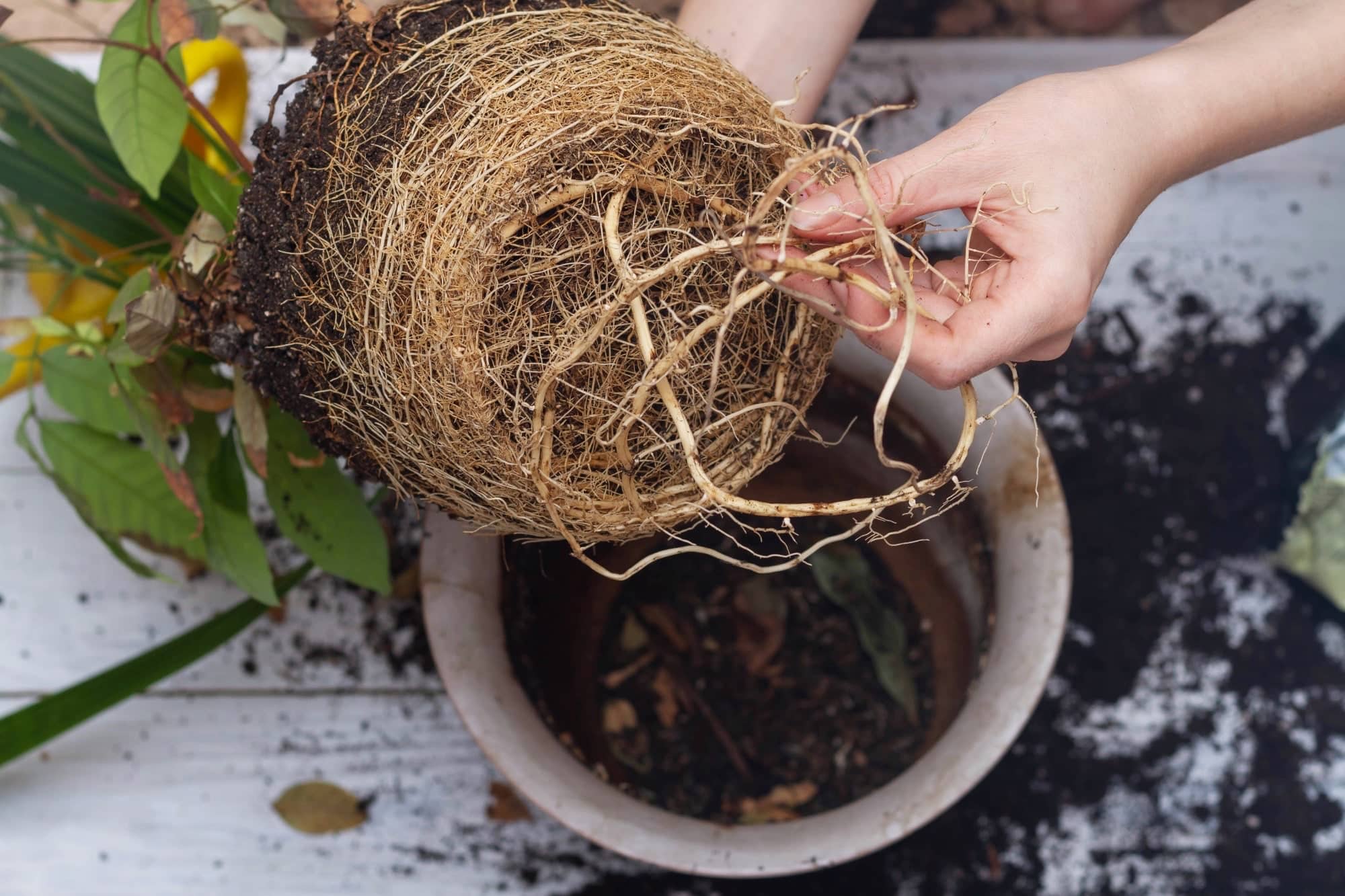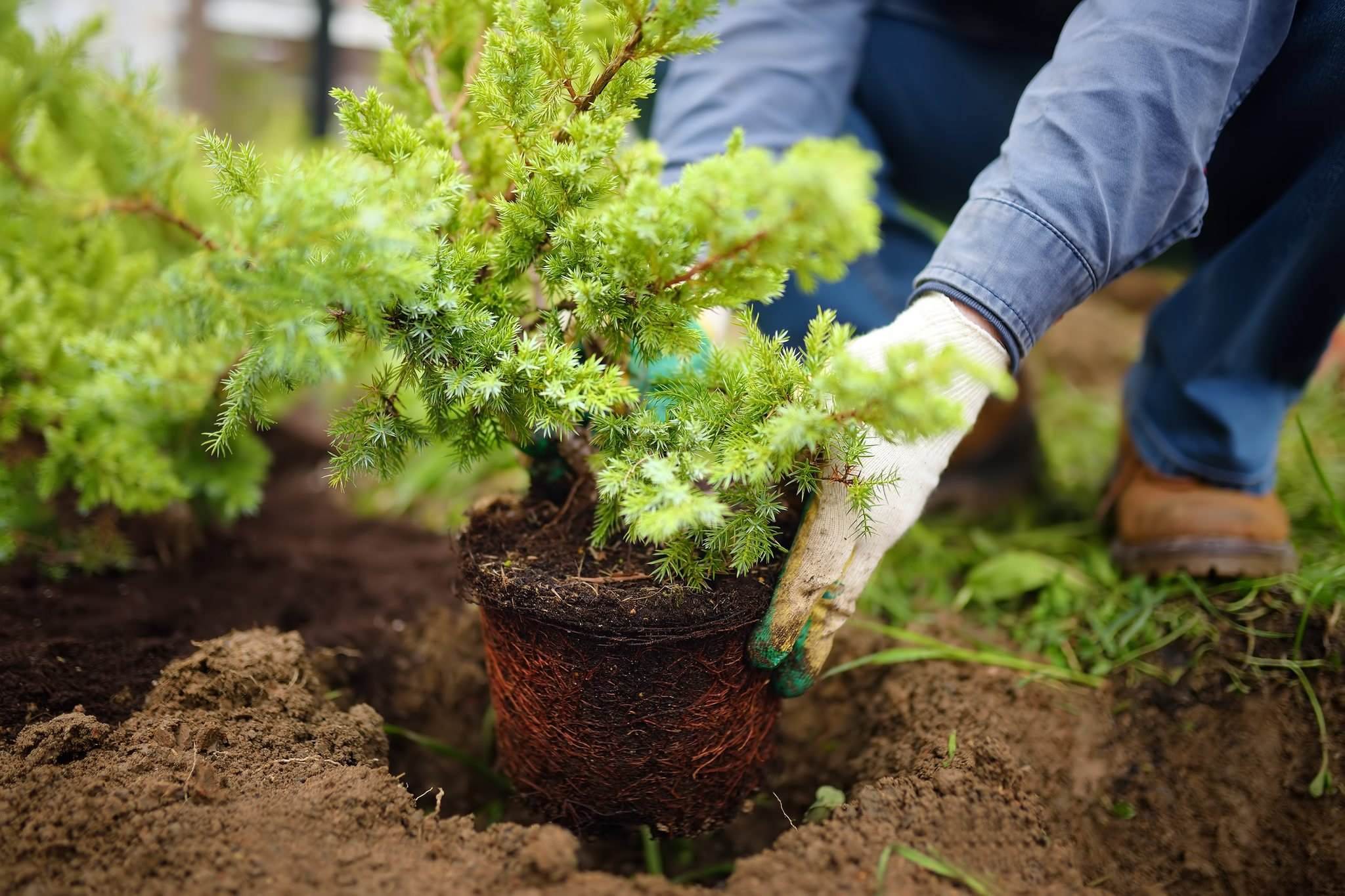Home>Types of Gardening>Ornamental Gardening>When Can You Dig Up Daffodil Bulbs


Ornamental Gardening
When Can You Dig Up Daffodil Bulbs
Published: January 24, 2024
Discover the perfect time to retrieve daffodil bulbs for your ornamental gardening needs. Unlock the secrets to successful bulb harvesting.
(Many of the links in this article redirect to a specific reviewed product. Your purchase of these products through affiliate links helps to generate commission for Chicagolandgardening.com, at no extra cost. Learn more)
Table of Contents
Introduction
Ornamental gardening is a delightful and rewarding hobby that allows you to create beautiful outdoor spaces filled with vibrant colors and breathtaking blooms. One popular flower that captures the essence of a blooming spring garden is the daffodil. With their bright yellow petals and trumpet-like center, daffodils bring a cheerful and welcoming atmosphere to any garden.
As an ornamental gardener, it is important to understand the life cycle of your plants, including when to dig up and replant bulbs. This knowledge not only ensures the health and longevity of your daffodils but also allows you to plan and design your garden effectively.
In this article, we will explore the optimal time for digging up daffodil bulbs, how to identify when they are ready for digging, and a step-by-step guide to ensure a successful and seamless bulb digging process. By following these guidelines, you will be able to preserve and propagate your daffodil bulbs, ultimately enhancing the beauty of your spring garden year after year.
Understanding Daffodil Bulbs
Before diving into the specifics of when to dig up daffodil bulbs, it is essential to have a basic understanding of what a bulb is and how it functions in the life cycle of a daffodil plant.
A daffodil bulb is a modified underground stem that stores food and energy for the plant. It consists of several layers, including the basal plate (the bottom of the bulb), scales (the fleshy leaves of the bulb), and the shoot tip (the emerging stem and leaves).
During the growing season, the daffodil bulb absorbs nutrients and moisture from the soil, storing them in its scales. This stored energy fuels the growth and development of the plant, allowing it to produce the beautiful flowers we all admire.
It’s important to note that daffodil bulbs have a natural cycle of growth and dormancy. Once the flowers have finished blooming, the foliage will start to wither, indicating the plant’s transition into dormancy. During this period, the bulb enters a resting phase, conserving its energy for future growth.
Understanding the life cycle of daffodil bulbs is crucial when deciding when to dig them up. By ensuring that the bulbs have completed their growth cycle and are dormant, you can safely remove and store them for future planting or propagation.
When to Dig Up Daffodil Bulbs
Knowing the right time to dig up daffodil bulbs is key to their successful transplantation or storage. The timing depends on the growth cycle of the daffodils and the climate of your specific region.
The general rule of thumb is to dig up daffodil bulbs after the foliage has completely died back. This typically happens in late spring or early summer, depending on your location. By this time, the plant has absorbed the necessary nutrients from the foliage and transferred them to the bulb.
It’s vital to allow the foliage to wither naturally, as this process allows the bulb to gather sufficient energy for future growth. Removing the foliage prematurely can lead to a weakened bulb and lower chances of successful transplantation.
If you live in a colder climate where the ground freezes, it is advisable to wait until the first frost before digging up the bulbs. The freezing temperatures help trigger the dormancy period, ensuring that the bulbs are in an ideal state for storage or replanting.
On the other hand, if you reside in a region with mild or warmer winter weather, it is best to dig up the bulbs a few weeks after the foliage has turned yellow and died back. This allows them to fully ripen and ensures optimal storage conditions.
It’s worth noting that daffodil bulbs can remain in the ground indefinitely if conditions are suitable. However, there are situations where digging them up becomes necessary, such as overcrowding, bulb rot, or the need for division and propagation.
To summarize, the best time to dig up daffodil bulbs is after the foliage has completely died back, typically in late spring or early summer. Additionally, consider the climate of your region and the freezing temperature patterns to determine the optimal time for bulb digging.
Signs that Daffodil Bulbs are Ready for Digging
Determining when daffodil bulbs are ready for digging requires keen observation and attention to detail. Although the general guideline is to wait until the foliage has died back, there are a few specific signs that indicate the bulbs are in an ideal state for transplantation or storage.
1. Withered Foliage: Once the daffodil flowers have bloomed and the petals have fallen, the foliage will gradually start to turn yellow and wither. This is a natural process as the plant prepares for dormancy. Wait until the foliage has completely yellowed and become limp before digging up the bulbs.
2. Softened Foliage Base: Carefully examine the base of the daffodil foliage. When the bulbs are ready for digging, the base of the foliage will start to soften and detach easily from the bulb. Gently tug on a leaf, and if it comes away effortlessly from the bulb, it is a sign that the bulbs have completed their growth cycle.
3. Browning and Drying Tops: Another indication that daffodil bulbs are ready for digging is the browning and drying of the tops of the foliage. The leaves should appear dry and crispy at the tips, signaling that the plant has ceased nutrient absorption and is entering dormancy.
4. Reduced Stem Height: As the daffodil bulbs prepare for dormancy, the stems will begin to shrink in height. This is particularly noticeable during the final stages of foliage withering. The stems may become shorter and less erect, which is a visible sign that it is time to dig up the bulbs.
5. Natural Lifecycle Timing: Familiarize yourself with the typical growth cycle of the specific daffodil varieties in your garden. Different varieties have varying blooming and foliage withering times. Understanding the natural lifecycle of each variety will help you determine when it is appropriate to dig up their bulbs.
Keep in mind that these signs may vary slightly depending on the specific daffodil variety and your climate. It is essential to regularly monitor your daffodil plants and use these signs as a general guide. Trust your instincts and exercise patience, ensuring that the bulbs are fully ready for digging before proceeding.
Step-by-Step Guide to Digging Up Daffodil Bulbs
When the time comes to dig up your daffodil bulbs, it is crucial to follow a systematic approach to ensure the bulbs are safely and successfully removed from the ground. Here is a step-by-step guide to help you through the process:
1. Prepare the Tools: Gather the necessary tools, including a garden fork or spade, a trowel, gardening gloves, a bucket or container for holding the bulbs, and a marker or labels for identifying the varieties.
2. Choose the Ideal Time: Make sure the soil is not too wet or too dry. Digging up bulbs from moist soil is easier and reduces the risk of damaging the bulbs. Wait for a dry day or allow the area to dry out before proceeding.
3. Loosen the Soil: Using a garden fork or spade, carefully loosen the soil around the bulbs. Start about 6-8 inches away from the plant to prevent accidental damage to the bulbs. Gently work your way around, gradually moving closer to the plant until the soil is loosened beneath the bulbs.
4. Lift the Bulbs: Insert the fork or spade underneath the bulbs and gently lift them out of the ground. Avoid piercing or slicing through the bulbs to minimize damage. If you encounter resistance, gently wiggle the tool to loosen the bulbs before attempting to lift them free.
5. Shake off Excess Soil: Gently shake off any excess soil clinging to the bulbs. Be careful not to remove the papery outer layer or any scales. The goal is to remove loose soil without causing damage to the bulb.
6. Trim the Foliage: Trim the foliage to about 3-4 inches above the bulb. This helps maintain the overall balance of the bulb and reduces moisture loss during storage.
7. Inspect and Sort the Bulbs: Examine each bulb carefully for signs of damage, disease or rot. Discard any bulbs that appear unhealthy. Sort the bulbs based on size or variety, if desired, to facilitate future planting or organization.
8. Label and Store: Label each group of bulbs to avoid confusion when it comes time to replant. Store the bulbs in a cool, dry and well-ventilated area. You can use mesh bags, paper bags, or shallow containers filled with dry peat moss or vermiculite to provide an ideal storage environment.
Remember to regularly check on the stored bulbs, discarding any that show signs of deterioration or rot. With proper care and storage, the daffodil bulbs should remain viable and ready for planting in the next growing season.
Storing Daffodil Bulbs After Digging
Proper storage is essential for preserving the health and viability of daffodil bulbs after digging them up. By following these guidelines, you can ensure that your bulbs remain in excellent condition for replanting or propagation:
1. Clean the Bulbs: Before storing, gently brush off any remaining soil or debris from the bulbs. Avoid washing them, as excessive moisture can lead to rot. The goal is to remove loose dirt while keeping the protective papery outer layer intact.
2. Inspect for Damage and Disease: Examine each bulb carefully, discarding any that show signs of damage, rot, or disease. Infected bulbs can spread diseases to other healthy bulbs, so it’s crucial to remove them to maintain the overall health of your collection.
3. Dry the Bulbs: Allow the bulbs to air dry for a few days in a well-ventilated area. This step helps remove any remaining moisture, reducing the risk of rot during storage. Ensure they are placed in a single layer to allow for adequate air circulation.
4. Choose the Right Storage Containers: Select suitable storage containers, such as mesh bags, paper bags, or shallow boxes. These containers provide good airflow and prevent moisture buildup. Alternatively, you can use trays or shallow containers filled with dry peat moss or vermiculite, which help maintain a stable storage environment.
5. Place the Bulbs in Storage: Arrange the bulbs in the chosen containers, ensuring they are not overcrowded. Bulbs should be stored in a single layer to prevent damage and allow for airflow. Consider sorting them by size or by variety, depending on your preferences.
6. Store in a Cool, Dry Location: Find a cool and dry storage location with consistent temperatures between 50-60°F (10-15°C). Avoid areas prone to extreme temperature fluctuations or excessive moisture, as these conditions can damage the bulbs. Ideal storage spaces include basements, garages, or a dedicated storage shed.
7. Check for Rot or Deterioration: Regularly inspect the stored bulbs throughout the storage period. Remove any bulbs that show signs of rot or deterioration to prevent the spread of diseases. Proper ventilation and periodic monitoring are crucial to maintaining bulb health.
By storing your daffodil bulbs properly, you will increase their chances of thriving when replanted or used for propagation. Remember to label your storage containers to keep track of different varieties and to plan your future garden designs effectively.
Conclusion
Digging up daffodil bulbs and properly storing them is an essential task for any ornamental gardener. By understanding the life cycle of daffodil bulbs and knowing when to dig them up, you can ensure the health and longevity of your plants. Remember to look for signs such as withered foliage, softened bases, and drying tops to determine when the bulbs are ready for digging.
Following the step-by-step guide for digging up daffodil bulbs will help you safely remove them from the ground without causing unnecessary damage. Cleaning, inspecting, and properly drying the bulbs before storing them is crucial for their long-term viability. Choosing the right storage containers and providing a cool, dry location for storage will help maintain the bulbs’ health until it’s time for replanting in the next growing season.
By paying attention to these details and investing time and effort into proper bulb care, you can continue to enjoy the beauty of daffodils year after year. Whether you’re a novice gardener or an experienced green thumb, the process of digging up and storing daffodil bulbs is a valuable skill to have in your ornamental gardening arsenal.
So, take the time to observe your daffodils, plan your bulb digging strategy, and dive into the rewarding process of caring for these beloved spring flowers. With proper care and storage, your daffodil bulbs will thrive and bring joy to your garden for seasons to come.




